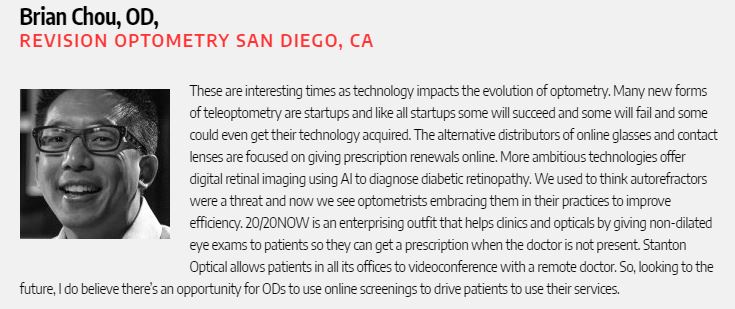TELEOPTOMETRY TOOLS ARE REDEFINING THE MEANING OF ‘PHONING IT IN.’
Ocular telehealth, which delivers eyecare remotely through medical equipment and telecommunications technology, is a hot-button issue right now. The question of whether it can offer a viable alternative to an in-person comprehensive exam is being intensely debated. What’s driving its progress are rising health care expenses as compared to the lower costs and added convenience its offers to patients.
There are about 200 different telehealth models being run these days in the U.S. and abroad, says Vitor Pamplona, founder of EyeNetra, which enables its customers to build their own telehealth models. And they are all different and generally protective of their own way of doing business. “The beauty of the state of vision care today is that anyone can build their own fully functioning telehealth system, using state-of-the art tools like EHR-enabled AI-based voice assistants, blockchain storage and crypto vision benefits all the way down to the most basic one-on-one patient coaching approaches,” Pamplona explains. “Software is cheap. Technology is cheap. The field is booming but in a very diverse and decentralized way.”
While some states, such as Indiana and Connecticut, prohibit ocular telehealth, the majority allow it. One of the fastest growing entrants is 20/20NOW, which has completed 78 installations of its Ocular Telehealth Solution and expects to complete 125 by year-end. “Optical retail has always embraced ocular telehealth,” says Chuck Scott, CEO of 20/20NOW. “We are now seeing a trend within private optometry to utilize ocular telehealth within their practice, primarily for practice expansion, revenue improvement and better work/life balance.”
Given an abundance of options, the challenge now facing ECPs is to decide which tools, if any, add value to their services.


